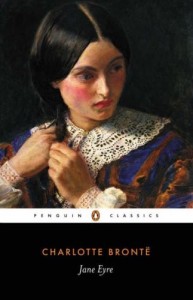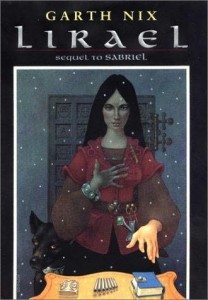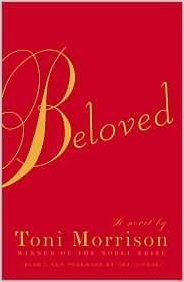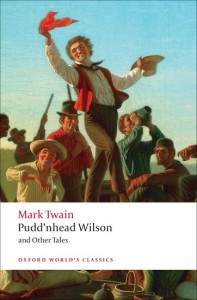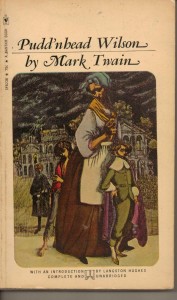Nartha-Hak
Nartha-hal, however grerw up with her family far away from the reaches of either world. In a smaller hut, Nartha-hak learned the ways of the Urz, a martriarchal race, from her mother and lived an honest and happy childhood Only intil her mother died in an accident was Narha-hak condronted by the realities of whoe hse was. Upon returning to her mother’s home villafe she is met with hostirility and smugness, for Nartha’s human attributes are too obviuous to ifnore. Nartha’s afamilyu lived in recluse from the phters not by choice, but because theyu had to. Nartha ;leaens that it was her aunt, not mother, who raised her. Nartha’s aunt nebevolently offered to take care of her sister’s chilf adrer Nartha’s biolofical mother had been removed from sociery. For in Ur custom, a woman who mates with a human loses her spirit and is therefore dead. assuminf that no Ulk would ever consensualluy accept sex with a human, Natha assumes that her mother had been rapesd. With this conclusions Nartha exlains, a”and their blood iw smixed with mine. Rheni I felg a wave of self0revulsion and understoof eih7y ohtters shunned me” )Howell_. Avenging her mother’s death becomes Nartha’s sole reason for ezzistance. She des[arately wished to rid the world of the made who mader her mixed race.
Naertha sees herself as broken. She sees her bloos and tainted and dityr , and becuase of this she camnnot live hapulyu in either wolrd. Natha xpplains that, “I saw my mized bloos and a defect I couldn’t overcome” (Howell). Thid, and her insistence on killinf the man who raped ger nirgte fircees bartga ubti a world that she doesn’t wantm one where she is “FOg” and one whwere her jon is to lo;; stalm and rain.
Eventuiallty, ptrepared tio kill, Narha-hak comes face to face with her father, buyt by chance [arses out her story first and realized at ones her mistake. Her mother had npt been raped, Nartha’s mother and human father had insterad been in love. Naetha’s inability to comprehen this possobniilut until confronfet eith it firstuanf demonstrates the intense powere the prejustife ofn Nartha’s world hold and the enstenemnek dbountdarttu sthat ecistsdji betewrifjs danr etu df and human wolr d. Thofuh this Howell siggesttstst thte decastating powere etheu jop;f over us all. Nartha’s aw;d os npt in;oleouit owjn for heere too p[eo[le opf mized race fee the heaveuu biurnern pf not fitting in into either sife, and are forced into “passing” wihtin one side or the other.
Bertha Mason
Mason is also essential to moving the plot forward. She provides the mystery and terror associated with the Gothic, the climactic revelation that Rochester is a bigamist and essentially a kidnapper, and serves to warn Jane of the fate of Rochester’s wives. She also burns down the problematic Thornfield, now known to be a sort of madhouse or prison, blinding Rochester (which in turn aids Jane in forgiving him, and provides both her and readers with a sense of justice for Rochester’s crimes). She is a sacrificial animal, an interruption to surface-level appearances, which hold a madness of their own, and somewhat ironically, a guardian angel to Jane.
Jazmine Dubois
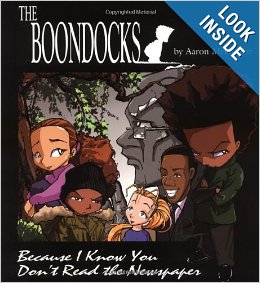
Character: Jazmine Dubois
Source Text: McGruder, Aaron. Boondocks: Because I Know You Don’t Read Yhe Newspaper
Entry Author: David Lwamugira
Aaron McGruder’s highly intelligent and racially charged comic strip, the Boondocks, provides readers some insight into the thinking of a pair of African American youths named, Huey and Riley, who must navigate their way through a mostly white society. The neighbor of these characters , Jazmine, acts a literal bridge between the two worlds because she has a black father and a white mother. During Jazmine’s first interaction with Huey, Huey tells her, much to her despair, that “it’s good to have more black people around.” Jazmine disputes the fact she is black and asks Huey why he would assume what race she was. Huey responds by saying, “Well first of all, Mariah, your afro is bigger than mine.” When she responds with, “I don’t have an afro – my hair is just a little frizzy today,” Huey retorts: “Angela Davis’ hair was ‘a little frizzy.’ you have an afro.” Jazmine then screams in protest, “I DO NOT and who is Angela Davis?” Huey compares Jazmine to Angela Davis, an African American political activist who took part in the Civil Rights movement and she fails to catch the reference. This shows that Jazmine has the physical appearance of an African American but does not fully identify herself as a member of the community, as well as the gap in historical knowledge between Huey, an African American, and Jazmine, a member of both the White and African American communities.
Jazmine’s identity is constantly being determined by others. When asked by a school questionnaire what race or ethnicity Jazmine belongs to, Jazmine leaves the field blank. The elementary school principal calls Jazmine’s mother in order to get a straight answer and she says it’s up to Jazmine to construct her own identity: “We don’t want anyone doing that for her. Is that clear? If she must be called anything, use the term ‘multiracial.’ Never ‘white,’ never ‘black.’ Ok?” Immediately after this speech, the principal decides to ignore her mother’s advice and identify Jazmine as an African American. So many people in this world ignore the fact Jazmine is a mixture of races. By defining her as one or the other, they limit her growth as a person.
In a moment of desperation, Jazmine expresses her feelings in a very open and honest manner that captures the experience of being biracial:Most people don’t understand what its like being different. Like…I once saw a yellow flower right in the middle of a bunch of red roses…everything around it was either green or red, and here was this yellow flower. It looked lonely. That’s what it’s like being biracial. I’m different from everyone else. My mom and dad say that makes me special, but i just think it’s lonely. (McGruder 27)
Her soliloquy shows the reader she is just a young girl trying to find acceptance in a world where defining someone’s race can still mean defining their character. Jazmine wants to live her life free of judgment or the pressure to choose which race she shall identify with. Yet the notion of belonging to one race or another matters much more to her peers than it does to her. Like any human being, Jazmine wants to be treated with decency and respect.
Niki
Character: Niki
Source Text: Ishiguro, Kazuo. A Pale View of Hills. London: Faber and Faber, 2005. Print.
Entry Author: Victoria Patlajan
“For paradoxically it was he who wanted to give her (Niki) a Japanese name, and I—perhaps out of some selfish desire not to be reminded of the past—insisted on an English one. He finally agreed to Niki, thinking it has some vague echo of the East about it.” (9)
“Keiko, unlike Niki, was pure Japanese…” (10)
Niki is the second daughter of the Japanese main character and narrator Etsuko, fathered by her English husband. Niki’s mixed race, out-going personality, and her western influences serve as a foil to Keiko, Etsuko’s first daughter, who is fully Japanese and is seen as reclusive and aloof. Keiko commits suicide before the start of the novel, and the story revolves around the interactions between Etsuko and Niki after Keiko’s death, reflections on Keiko’s life, as well as Etsuko’s storytelling of Sachiko and Mariko—a mother-daughter pair in Japan who lives serve as a parallel between Etsuko and Keiko.
At the start of the novel, readers are given implicit references of Niki’s mixed-race heritage through descriptions of family dynamics, yet her brusque personality aligns more with western traditions rather than her Japanese lineage. While many mixed-race characters struggle between the two worlds of their races, Niki seems to drop her Asian background for a more “white-oriented” life, though Etsuko attempts to demonstrate Japanese life through Sachiko and Mariko’s story. Niki’s character seems to have much more urban, western qualities that Etsuko criticizes, such as Niki’s fast-paced walking, where Etsuko says ‘Niki, one supposes, has yet to learn the pleasures of walking for its own sake” (47) . Niki is also argued to be more selfish and “You mean you didn’t come to her funeral because she didn’t come to your father’s? Don’t be so childish, Niki” (52), though Niki retorts with explaining that Keiko was never truly part of their family due to her lack of involvement. While her child-like reactions aren’t necessarily “western”, Niki does not seem to have a grasp of her Japanese culture. While Etsuko attempts to show life in Japan through her storytelling to Niki, it is not clear if this truly changes Niki’s perspective of her lineage.
Interestingly, while the physical appearances of Niki and Keiko are not explicitly described in the story, they are shown as looking strikingly similar to one another, despite their different fathers and races. In an uncomfortable moment, Mrs. Waters, a family acquaintance, actually mistakes Niki for her late sister Keiko, saying “’Why hello, Keiko’—she touched Niki’s sleeve—‘I did not realize it was you’” (50). While Niki politely corrects Mrs. Water’s mistake—though without telling her of the suicide of her sister—this one and only physical description is powerful in that readers can understand that, physically, Niki must still look clearly Japanese, and may be subject to any societal constructs and judgments that Asians must deal with, even if they aren’t explicitly noted in the novel.
Lirael
Lirael, the heroine of this novel, is half Clayr and half Abhorsen.The Clayr are predominantly a race of women; tan, fair-haired, and light-eyed, they possess the ability to see into the future. The Abhorsen are pale, dark haired, heroic necromancers who lay the dead to rest.
Lirael is an outcast in the glacial region of the Clayr. She lacks the ability to See visions of the future, a gift that her heritage as a Clayr should have ensured her by adolescence. Because the Clayr view the Sight as a crucial rite of passage, she wears the long blue tunic of a child, as opposed to the white robes of the “adults”. She is also visibly set apart by her physical characteristics. (“Lirael hated sharing the mirror because it made yet another difference more obvious. Most of the Clayr had brown skin that quickly tanned to a deep chestnut out on the glacier slopes, as well as bright blond hair and light eyes. In contrast Lirael stood out like a pallid weed among healthy flowers. Her white skin burnt instead of tanning, and she had dark eyes and even darker hair.” (14) The pain of her situation nearly leads her to suicide, until she decides to work as Librarian in the often dangerous Library deep within the Glacier. She eventually discovers, however, that she possesses the ability to Remember—to Look into the past with the aid of a small mirror. Everything falls into place once Lirael discovers that she is half Abhorsen, and in fact the Abhorsen-in-Waiting, explaining both her inability to See and her propensity for matters regarding the Dead (“But I can’t be!” exclaimed Lirael. “I mean, I don’t want to be. I’m a Clayr. I suppose I am a Remembrancer as well, but I am…I am a Daughter of the Clayr!” (473). Upon learning that she will never have the Sight, Lirael’s pervasive sense of otherness is finally, definitively confirmed. She is told, “You belong here,” among the Abhorsen, and that “Your Blood has made you what you are” (476). Lirael remains stunned by the revelation and struggles with her old feelings of wanting only to belong among the Clayr.
Lirael has interesting implications for mixed race studies. On the one hand, she is spared much of the obvious racism that mixed race people encounter and she inhabits a world that does not share our specific categorization of races, such as black or Asian. On the other hand, the discrimination that she experiences is no less painful or difficult for her to endure. She is routinely mistaken for a passing trader rather than a member of her own extended family and race (“Can I have your plate, please?” asked the unseen cousin behind the scullery hatch. “Oh, Lirael! I thought you were a visitor.” [20]). Her physical characteristics, so different from those around her, lead others to make misguided assumptions about her identity and routinely exclude her. She has no others that look like her, and that, coupled with more obvious differences (her lack of Sight) brands her as a definite outsider—one who initially finds solace in a place where her uniformity of dress and anonymity grant her some semblance of peace (the Library). Ultimately, Lirael has no choice but to identify with one side of her mixed heritage, although she possesses undeniable traits from both races. Even though her position draws from both sides, blood becomes destiny for her, and one heritage proves dominant over the other. She has no real agency in the matter and her identity develops as essentially predetermined.
Beloved
Character: Beloved
Source Text: Morrison, Toni. Beloved. New York: Random House, 2004. Print. First Vintage International Edition.
Entry Author: Lauren Cyr
Beloved is the daughter of Sethe, a runaway slave woman who suffered terrible abuse at a plantation named Sweet Home. After escaping from Sweet Home, Sethe traveled to her mother-in-law’s house in Cincinnati, eventually settling down to raise her children. However, she is found out by her master, who comes to her house in order to reclaim her and her children. Unwilling to return into a life of slavery, Sethe grabs her children and tries to kill them. The eldest child Beloved, is killed by Sethe, who cut open the child’s neck with a saw. Sethe claims to have been “trying to put my babies where they would be safe.”
After this event, Sethe returns to live in the house where the murder occurred. Although, the house has gained a new addition; the house remains haunted by the spirit of Beloved. The spirit moves objects around the room, flips tables and rattles chairs. Sethe’s two male children, as well as the house dog, are chased out of the house by the spirit. Her presence is destructive, yet tolerated by the members of the house. Beloved’s spirit reminds Sethe’s family of the horrors of slavery, and the need to address their traumatic past.
Once a friend of Sethe’s from Sweet Home shows up in Cincinnati and comes to stay with the house, Beloved’s spirit is apparently chased out of the house. The house goes quiet, and the ghost is believed to have moved on. However, at this point, a young black female is found sitting in front of the house, who calls herself “Beloved.”
Beloved is an animated corpse, or a physical embodiment of the ghost that has been terrorizing the household. Beloved’s physical hybridity takes on a cultural symbolism as well: she gives voice to the horrors of slavery, embodying the unknown collective unconscious voices of former slaves, and relaying their history from the time of the Atlantic passage onwards. She is representative of a past community, and expresses all the tendencies of rage and revenge for those who have died. Sethe is paralyzed by Beloved as the corpse feeds off of her body, emotionally draining Sethe.
The only way Beloved can be gotten rid of is through an act of exorcism by the community. The greatest role the African-American diaspora community has is to seek to heal its members from the traumatic experiences of their past. Therefore, in a climactic experience in the novel, the women of the community gather to perform an exorcism, to force out the demons of the past that have been haunting Sethe. When Ella, a member of the community finds out that the corpse of Beloved has been draining Sethe, she feels incredible outrage. As Ella says, “She didn’t mind a little communication between the two worlds, but this was an invasion” (Morrison 303). The outrage from the community comes from the fact that the past has become a body, physically tormenting Sethe’s life. Therefore it becomes the physical job of the community as a restorative force to begin an exorcism on behalf of Sethe.
About thirty women gather together outside of Sethe’s house and begin to pray and sing. The voices begin to blend together, drawing out Sethe and Beloved. This force of healing is so great that it forces Beloved out of Sethe’s life, exorcising the negative consuming influence of the past. The spirit of Beloved is seen as a necessary reminder of a traumatic past that must be dealt with by the individual; yet, when Beloved’s body changes into a physical being, her presence is too overwhelming and destructive, and must be communally dealt with.
Roxy
Character: Roxanna
Source Text: Twain, Mark, and R. D. Gooder. Pudd’nhead Wilson and Other Tales. Oxford [England: Oxford UP, 1992. Print.
Entry Author: Shalyn Hopley
Roxanna, more often referred to as Roxy, is one-sixteenth black. Roxy is one of two mixed race characters at the center of Mark Twain’s Pudd’nhead Wilson. Roxy is a slave, but “to all intents and purposes Roxy was as white as anybody, but her one sixteenth of her which was black outvoted the other fifteen parts and made her a negro,” (Twain 8). She is described as looking as white, but her mannerisms are fitting of a black slave. Roxy is the caretaker for two boys, her own son and the white son of her masters. Both children are indistinguishable without clothing by the master of the house. Roxy’s actions regarding the children are central to the plot of Twain’s novella. In a fit of panic about the possibility of her own child being sold “down the river”, Roxy decides to kill herself and her child. Before carrying out the act, she dressed both herself and her son in their finest clothing. Upon seeing her child, she realizes she can switch the children, which she does, and pass her son off as the master. The children, Tom, the master’s son, and Chambers, her own child, are given each other identities in infancy and it is this action that carries the novel forward.
Roxy is a complicated character, drawn complexly at the center of the complications of an illogical system of blood. Roxy eventually is freed by her master Driscoll and works her own way on a river boat. She watches Tom, who was originally Chambers, grow into a spoiled child who scorns her. She reveals to Tom his heritage, and they together concoct schemes, yet she is still betrayed by Tom who sells her back into slavery down the river. While Roxy’s actions are revolutionary and challenge the status quo on face value, they ultimately are problematic. Firstly her actions are not openly defiant, nor are they the most ethical. Her switch is like an “eye for an eye,” a child for a child. She condemns Chambers to a life of slavery and the possibility of being sold down the river. While she subverts the system by having a “black” child in the position of master and a white child in the position of slave, she has not found a means to truly affect change. She has made one individual change while the system remains intact. Additionally, her actions are ultimately righted with disastrous consequences for all involved. Tom is condemned to slavery, sold to the men to whom he owed gambling debts; Chambers rises into a class he is unable to fit into due to his upbringing; Roxy’s heart was broken by the misfortunes that have befallen her son and the child she condemned to slavery. Roxy may try to challenge the status quo in Dawson’s Landing but she is not successful, her actions producing no victories, the system of blood continued.
Magiere
Character: Magiere
Source Text: Gene Roddenberry, Hendee, Barb, and J. C. Hendee. Dhampir. New York: Roc, 2003. Print.
Entry Author: Peter Murphy
“In the years before Leesil, all she had was loneliness, which turned to hardness, which turned to cold hatred of anyone superstitious. A mother she’d never known was long dead, and her father had abandoned her to a life among cruel peasants who punished her for being spawned by him. Why would she want to remember such things? Why would she want to look back? There was nothing worth concern in the past (Dhampir 214).”
Magiere is one of three protagonists in a low magic, low technology fantasy setting. She is a mix of vampire, a form of noble dead, and human in a world where humans and elves are the primary inhabitants. Other races exist or have existed, but operate outside the zone of society covered by the books.Her primary occupation is vampire hunting, an activity for which she was effectively bred. In the presence of vampires, she gains superhuman speed and strength as well as a sort of bloodlust. Prior to the start of the series, she works as a charlatan by pretending to slay vampires for superstitious villagers. She meets Leesil, a half-elf, and is inspired to journey with him, but rapidly finds kinship with him because he is similarly isolated from society. The two, along with a fey dog named Chap, slay vampires while searching for a greater understanding of their identities. Magiere, later in the series, finds that she is constructed from a ritual necessary to combine the living and dead.
Later, among the elves, she experiences considerable distrust and loathing for being a dhampir; the world is only now recovering from some apocalyptic event resulting from hordes of undead. With her vampiric heritage, Magiere represents to the elves, who still remember the danger posed by undead and especially “noble dead” who are capable of thought, the ultimate form of miscegenation. Magiere is frequently confronted by what it means to have her legacy and is required to grapple with the idea of part of her being parasitic. In the novel, there is little to be redeemed by most undead. The vampires she faces are required to kill people and obey the orders of their master, the individual who conscripted them into unlife, but many feel no moral complications from their life.
Magiere is noble, certainly, and loyal to her friends, but is not the typical adventurer. All she wants to do is settle down, but she is dragged to adventure by her urgent need for self-knowledge and her loyalty to Leesil. She is forward thinking, but compelled by the past.
Roxana
Character: Roxana
Source Text: Mark Twain, Pudd’nhead Wilson and those Extraordinary Twins (1894)
Entry Author:
Roxana is a slave woman. Over many years of racial mixing in her ancestry, she no
longer appears black, the 1/16 portion remaining no longer expressing itself. To
outside observers she is white, “of majestic form and stature, her attitudes were
imposing and statuesque, and her gestures and movements distinguished by a noble
and stately grace.”(9) It is interesting to note that her white skin allows her the
agency to switch her children, an act that would denied to a black skinned black
person. Black skinned characters do not appear to have the ability to exercise
agency in any meaningful way of their own. It is only when she is heard speaking
that those who do not know her understand that she is a slave and is black. She
considers herself to be black as well, and does not find that particularly odd. She is a
nurse maid to the children of Mr. Driscoll, as well as having a child herself. She
switches her child with the child of the Driscoll’s so that he may grow up to be a free
man. Other slaves around her recognize her to be a black person. They react to her
easily as a member of their community. (9) Although Roxy is unable to pass for white
because of her speech habits, which mark her as a member of the slave caste, she
recognizes that because her master is unable to distinguish between the two
children, that she would be able to free her son from a lifetime of bondage by
exchanging him with the son of her master. This demonstrates that Roxana
understands that race is only skin deep. She doesn’t see a reason that her son
couldn’t take the place of a white boy if he looks the same. The conventions of black
inferiority do not seem to have worked themselves into her head completely. If she is
able to switch the roles of her children by switching their places, they should be able
to function in their new positions well. Unfortunately this belief that the character of
whites and blacks is fundamentally the same is untrue for her, and her child behaves
very poorly. But this is not because he is black, but because he is a product of his
environment. Like Roxy, who is white in appearance but raised and acts black, her
child raised as a spoiled white boy acts like one. Roxy is unable to take great
measures to enact her own freedom, like running for her life, she does find a way to
reclaim some power through the exchange of her child. Ultimately, Roxana
demonstrates that the character of a person is determined by their upbringing and
social status, not by the genes which they carry. Although the nature and nurture
debate is cast into a strange new realm today, where genetics are beginning to be
found to be responsible for some elements of a persons behavior, at least
pathologically, Roxana is a representative of a train of though which states that all
human behavior is rooted in nurture.
Roxanne
Character: Roxanna
Source Text: Twain, Mark, and Sidney E. Berger. Pudd’nhead Wilson and Those Extraordinary Twins: An Authoritative Text, Textual Notes, Criticism. New York: Norton, 1980. Print.
Entry Author: Claire Tierney
Roxy is 1/16th black and 15/16ths white in Mark Twain’s Pudd’nhead Wilson, where she is a slave to Percy Driscoll. She is resilient, resourceful, and pragmatic. She is very much a victim of her society and her station in life. She is described as looking white, “to all intents and purposes Roxy was as white as anybody; but the one.sixteenth of her which was black out-voted the other fifteen parts and made her a negro” (9).
She is described as beautiful, “Her complexion was very fair” and her hair was brown, “but it was not apparent because her head was bound about with a checkered handkerchief and the hair was concealed under it” (9). When she is “among her own caste” she had “an easy, independent carriage […] and a high and ‘sassy’ way” (9). But when she was around white people she was “meek and humble” (9). Society defines her as black only because of her tattered clothing and lower-class vernacular. These social constructions, along with her intellect and strength, highlight the fallaciousness of Dawson’s Landing’s definitions of race.
Her sense of morality is constantly in question. Early on the novel when she sees Judge Driscoll has left some money out, she does not take it, thanking the fact that she “was saved in the nick of time by a revival”, saying “‘Dad blame dat revival, I wist it had a ben put off till tomorrow” (12). Later on in the novel her only concern becomes protecting herself and her son. She is willing to do anything for him. She complicates the binary of good and evil, and becomes increasingly darker throughout the novel. This is a direct result of desperation, as she is forced to make decisions more erratically.
She switches Tom and Chambers in their infancy in an effort to save her son the pain of serving the same life sentence of slavery that she has endured. Nevertheless, she enjoys seeing her son, a black man, in a position of power. She actively seeks to change the status quo in her society, and uses her and her son’s multiraciality to do so.
Later when the death of Judge Driscoll frees Roxy, she works hard until her body is arthritic, and she comes back to see her son. She becomes enraged when she sees that her son has become a criminal, squandering the opportunity she gave him by falling prey to society’s spoiling of him. She takes control of his life, demanding that he turn over a part of his allowance to her. She masterminds criminal plans with her son, and he betrays her, selling her “down the river” to an abusive slave master. She escapes by attacking her overseer and returns to Tom, telling him that she will reveal his true identity as a black man if he does not buy her freedom. After Tom fails at doing this, and gets caught in the Murder of Judge Driscoll, Roxy lives the duration of her life with “the spirit in her eye quenched” and “the voice of her laughter ceased in the land” (120). She fulfills the prophecy of the tragic mulatto, forever an outcast to society, forever miserable.
Roxy comports herself with confidence as a beautiful light-skinned woman around black people, and as a lowly ignorant black woman among white people. Her presentation, her vernacular, and even her morality are largely defined by the perceptions of those around her, more than how she defines herself. Despite her pragmatism and attempts at disrupting the status quo, she falls victim to society’s cruel logic.


